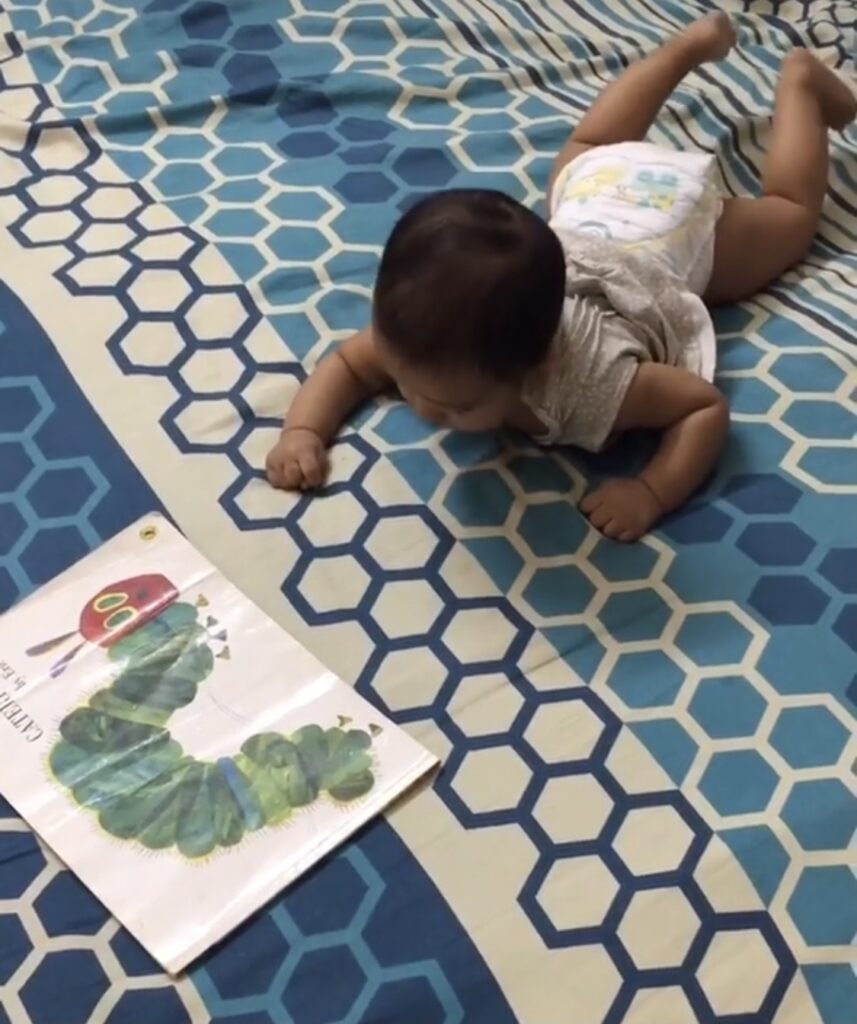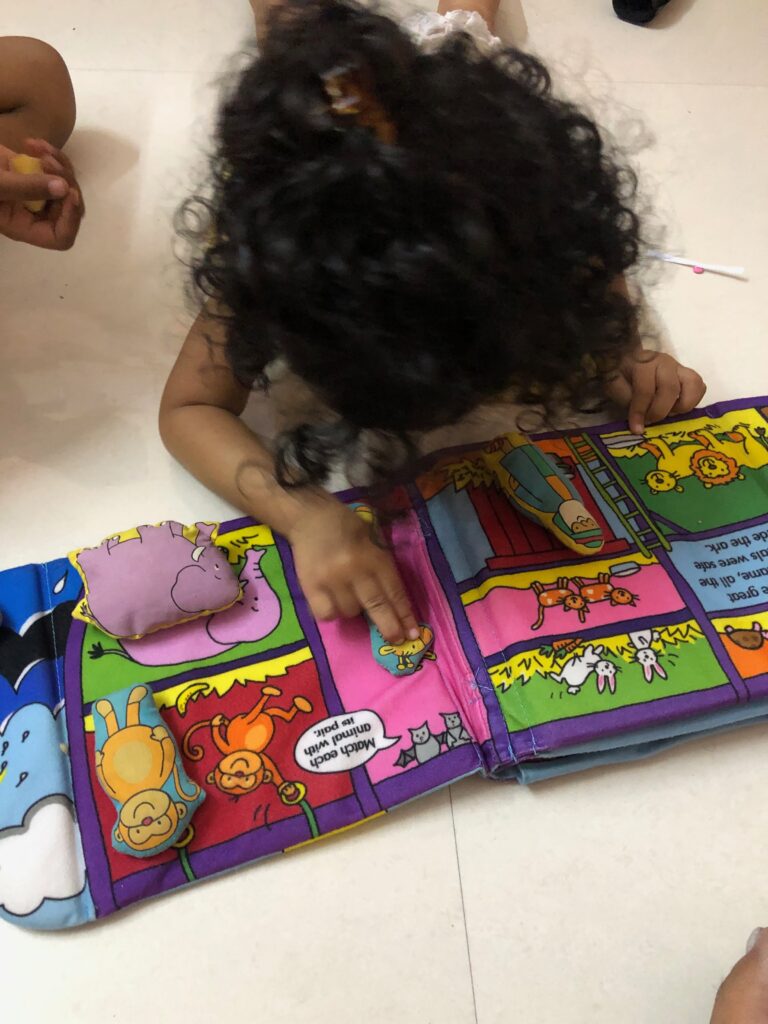When I was expecting our first one, before I could get a pair of clothes for my little one, I just knew I had to get into getting books and I can’t tell you enough for my love of children’s literature, they speak volumes to me as an adult, its just not the illustrations, the magic of creativity and imagination is just beyond exciting. I love how much power children’s stories hold that could talk about every existing concept in such a gentle way.
But as a parent, when you are diving into the world of books, children books it can be overwhelming, a whole new genre all together, you don’t know which ones to get, just the colourful or pretty ones, or ones with academic benefits like the ones which teach us letters or numbers. Since most of us may not belong to the culture of books as a wholesome approach to grow! I have to confess say I haven’t had a lot of books to read from as a baby or as a toddler, most of the books that came to me were in school, and then the ones we were introduced in our school library.
Things however had changed drastically when it came around my child, as early as 6 months, my child had a book to play with while bathing, to touch and feel, to be read aloud. Suddenly our generation as parents have awakened and have realised the importance of introducing “BOOKS” to children in a fun, playful method of learning and growing.
So, when you think “when can I introduce my child to books”, I would say NOW. It’s never too early or late. The love of books can be transcended at any age, yes , the earlier the better but don’t ever feel discouraged to start at whatever age group your child is at now.
Children’s books comes in all sizes, shapes, kinds, types just like our children. And it suits each age group accordingly.
NEWBORN:
For newborns you must be wondering how, they can barely see anything with those blurry vision to start of with, they are only sleeping and their wake window is so small ! Postpartum as you grow into bonding with you baby, and every week you could see changes developing in your baby, you would note how their wake window gradually increases, they observe the things around them. Infants usually have poor eyesight, and the amount of colour vision is not known for certain, but infants probably do not see subtle differences in colour until 2 to 3 months of age.*
Babies like objects with high contrast, such as black-and-white bull’s-eye patterns, checkerboards, and concentric circles of contrasting colors. It is good for your baby to have different things to look at, and she/he enjoys it when you occasionally change the objects in her environment. Remember before birth, your baby was accustomed to a dark, muted environment.
So, this is a good time to get more sensorial books like the cloth books with squeak sounds or mirrors, or broad contrasting patterns with is good starter for infants.
3-6 MONTHS:

While newborns can only see black, white and grey. As their colour vision develops babies will see bright colours by the time they reach five months of age. The best age to start “read-aloud” is this bracket .
Remember the task here isn’t to finish the book from cover to cover, as your baby begins to enjoy the rhythm and flow of the day, from feeding to sleeping, try to make reading books with your child an integral part of their daily routine too. So, this is time to introduce interactive books, like touch and feel books, cloth books, board books with bright colours and sequencing.
6 MONTHS – 1 YEAR
As babies grow rapidly during this time frame both physically and mentally. This is a great time to have picture books. Lots of pictures, little write up but lots of interactions.
When reading with your baby, point out key images, like “car” and “tiger”. The more that you talk and read to them, the quicker they will learn to speak. This is best language building program there ever is.
2-3 YEAR

This is a good time to introduce the classics, yes, there are some classical books that have been passed down from generations after generations and really have never grown old out of time and space, and some traditions are best to be followed- traditions like these!
It is also good time to introduce different authors, different style of work, the different kind of illustrations, have authors from around the globe for introducing diversity in literature.
While this age group understands “me” and the world around them, they grow in their social skills, go to pre-school, having books that primarily use illustrations to tell the story and often share life lessons related to emotional intelligence (empathy, forgiveness, kindness), relationships, social connections, and morals are a good go-to.
The books must be fun and interesting because they help children learn not just to read, but to navigate their world.
4 – 5 YEAR
This age group is introduced to school, they now know their basic ABC’s or early math.
An abundance of research all points to the same thing: kids that read (or kids that are read to) daily from an early age perform better on their report cards. As children move through the phases of listening to stories, sounding out words, stringing words together to make a sentence, and then, eventually, reading a complete book, they begin to master language, improve communication skills, and their comprehension blossoms.
I have to be honest ‘Read aloud books’ could be a pain to the parent sometimes, coz I have read few books close to a million times to my girls, but I remind myself to hold my patience and I would say that to you too. Repetition is the way young kids learn. Your child is picking up vocabulary like no other.
This age group are beginners to reading, so their books have characters, settings, and themes relevant to this age group, such as challenges the child might face, like feeling left out or making friends. The books include short, uncomplicated story lines that are told with words and illustrations, but the illustrations are secondary and not necessary for understanding the story. Words are simple, sentences are short, and there is plenty of action and dialogue.
6- 7 YEAR
My daughter almost 6 now loves books, if not reading, she would be drawing and making one or listening to one in Epic. Her read aloud books have become the ones without any pictures, so it encourages imagination as I read on for her.
They have Chapter books which are 4,000-15,000 words in length. These books have more content and more complex language than the children may have seen before. Therefore, they are broken into chapters to help the readers better comprehend the material.
Having said all this, please do not take this as the ultimate guideline for each age group, always remember that each child is different and unique in their own way, I have found in my own personal experience how my own two children have been so different from each other, and so have their milestones and interests been. So, my only advice to NEW PARENTS would be to go gentle, go slow and most importantly have fun along the process. Start reading whenever you are ready and are ready to unlearn and debunk a lot of theories you have come across so far, because raising a reader is a beautiful and patient/long journey but so worth it!
I wont be able to comment on the older age group yet, as am yet to explore that on my own. I share my personal experiences mixed with data I personally research on.
I hope you have fun reading and exploring the book world and introduce the joy of reading to your baby.
“Today a reader, tomorrow a leader”
Margaret Fuller
——–
Sources:
* Source Newborn Intensive Care: What Every Parent Needs to Know, 3rd Edition (Copyright © 2010 American Academy of Pediatrics)
* Scholastic, Penguin
*Author Learning Centre
